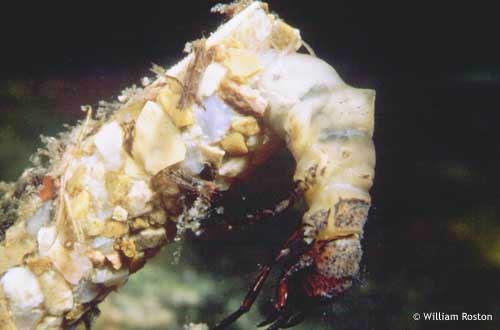Caddisfly Larva, Molting |
||
Caddisfly Larva, Molting |
||

| Caddisfly | ||
|
Order Trichoptera Caddisfly larvae are the youthful stage of the Caddisfly, an insect. The larvae are important food for fish. They use their own glue to make cases out of sand grains or pieces of plants. It goes along with them as they hunt for food. They duck inside for protection. When a larva gets too large for its skin and case, it molts (sheds). Then it builds another, larger, case to grow into. This molting caddisfly larva will leave this case and build a larger one. When the larva is full-grown, it attaches its case onto something in the water. It seals itself inside for its pupa (transformation) stage. When ready, the pupa crawls out of the case, climbs out of the water onto a rock or plant, and molts into an adult caddisfly. There are 800 different species of North American caddisflies. Size: Mature larva, ready to change into an adult fly, might be 1 inch long. Notice: |
||
| This is the Web site of the Bryant Watershed
Education Project, based in West Plains, Missouri. Our site is a toolkit
for exploring the Bryant Creek, North Fork, Eleven Point and Upper
Spring watersheds in the southern Missouri Ozarks. Learn more. |
||